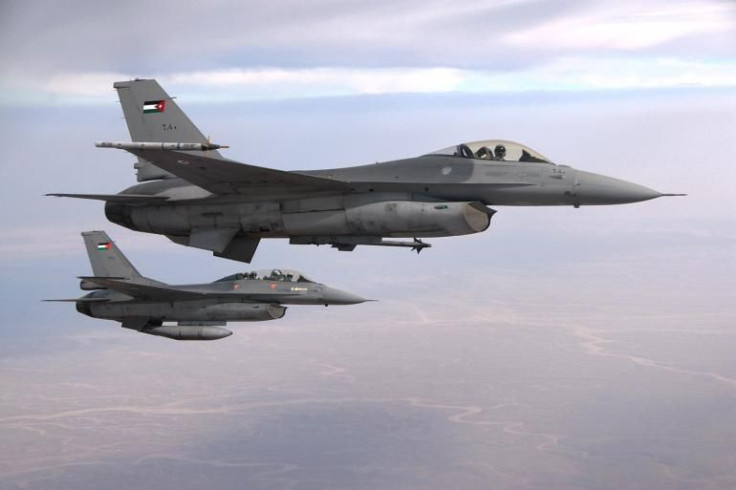Islamic State Group Publishes Captured Jordanian Pilot Interview, Photos

The Islamic State group, in the latest edition of its Dabiq magazine, released the first images and the first interview with the Jordanian military pilot it captured last week. The magazine showed the pilot, Muath al-Kassasbeh, 26, a first lieutenant in Jordan’s air force, wearing an orange jumpsuit.
Kassasbeh crashed his plane flying on a mission for the U.S.-led coalition in Syria near the ISIS stronghold of Raqqa. ISIS claimed to have shot down and captured Kassasbeh, but both U.S. and Jordanian officials have said the plane crashed because of technical difficulties.
"We were informed of the mission the day before at 4 PM. Our role in the mission was to be sweepers and cover for the striker jets. We sweep the area to destroy any anti-aircraft weaponry on the ground and provide cover in the case enemy jets appear," Kassasbeh was quoted as saying in the interview. "We entered the region of ar-Raqqah to sweep the area, then the striker jets entered to begin their attack. My plane was struck by a heat-seeking missile. I heard and felt its hit." International Business Times could not independently verify the information published in the Dabiq interview.
The U.S. Central Command, or Centcom, said in a statement, “Evidence clearly indicates that ISIL did not down the aircraft.”
In the statement, Army Gen. Lloyd J. Austin III, Centcom commander, said: “We strongly condemn the actions of ISIL, which has taken captive the downed pilot. We will support efforts to ensure his safe recovery, and will not tolerate ISIL’s attempts to misrepresent or exploit this unfortunate aircraft crash for their own purposes.”
Despite the U.S. and Jordan denying reports the plane had been shot down, there is a chance the militant group had succeeded in fighting the coalition's air power from the ground.
The Iraqi Defense Ministry has said that the Islamic State group has in its possession anti-aircraft weapons known as Manpads, shoulder-fired anti-aircraft missiles, as reported by the Washington Post. Images released Oct. 10 showed ISIS shooting down an Iraqi government helicopter with a shoulder-fired missile.
And IBTimes reported that just days after the U.S. began using Apache helicopters against ISIS in Iraq, the extremist group responded by producing a guide to shooting down the aircraft. The guide explained in minute detail how to use portable surface-to-air missiles, such as the Russian-made SA-16 and SA-18 and the American FIM-92 Stinger, against the attack helicopter.
Kassabeh said in the interview that his plane had taken off from Jordan, but the mission had been coordinated and managed in Qatar with the help of the U.S.
The capture of the Jordanian pilot last week by the Islamic State group in Syria was the first time the U.S.-led coalition fighting the Sunni militant group had suffered a public setback. One of the coalition's own pilots had been captured and held hostage by the group that it is spending millions to stop. The coalition has yet to publicly acknowledge the hostage situation, raising questions as to whether Jordan is negotiating with the group for the pilot's release.
ISIS listed several demands it wants Jordan to meet in exchange for the release of the pilot. The Sunni militant group has demanded Jordan stop fighting with the U.S.-led coalition and release several prisoners in exchange for the pilot, regional media reported Sunday. It was the first time ISIS demanded a member of the U.S.-led coalition drop out of the fight.
The U.S. has yet to issue a statement about the demands or the interview in Dabiq.
© Copyright IBTimes 2024. All rights reserved.





















